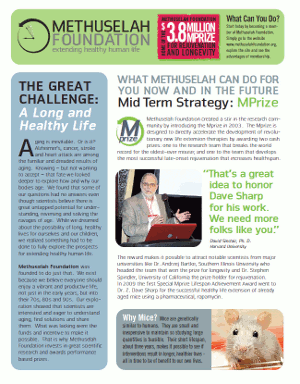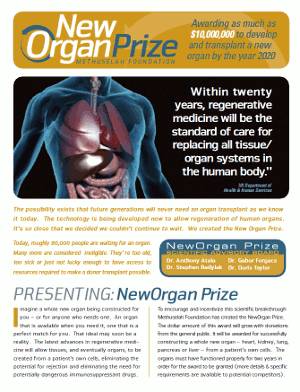More genetic and other studies of long-lived people are taking place these days, which means a faster flow of results than has been the case in past years. Part of that can no doubt be attributed to an increased interest in manipulating the aging process in the scientific community, as well as the continually falling cost of the tools needed to run such studies. While perusing PubMed recently, I noticed a few new reports from ongoing longevity studies starting with one from the Leiden Study in the Netherlands, which you might recall produced some interesting results on thyroid hormones and human longevity last year. Here's the paper:
Favorable glucose tolerance and lower prevalence of metabolic syndrome in offspring without diabetes mellitus of nonagenarian siblings: the Leiden longevity study.
Despite similar body composition, the offspring of nonagenarian siblings showed a lower prevalence of metabolic syndrome and better glucose tolerance than their partners, centralizing the role of favorable glucose metabolism in familial longevity.
Next, another association between heat shock proteins (HSPs) and longevity. Heat shock proteins are becoming a hot field of study, as is true of all things related to autophagy, the collection of processes by which cells recycle damaged components. The evidence strongly supports more efficient autophagy as a way to live longer in good health - if damaged cellular components aren't hanging around as long, they will cause less lasting harm. For example, boosted autophagy is thought to be one way in which calorie restriction extends life in laboratory animals.
Anti-inflammatory heat shock protein 70 genes are positively associated with human survival
We have studied the association of three single nucleotide polymorphisms [present] in the three HSP70 genes, with human survival, in a cohort of individuals born in the year 1905. This population cohort is a part of the longitudinal study of Danish nonagenarians. Since DNA samples were already collected in 1998, this gave us the opportunity to perform survival analysis on these subjects. Haplotype relative risk, and genotype relative risk were calculated to measure the effects of haplotypes and genotypes on human survival in a sex-specific manner. A significant association of HSPA1A-AA and HSPA1B-AA genotypes with poor survival was observed in female subjects. Also the female carriers of haplotype G-C-T had longer survival than the non-carriers. On an average, female carriers of the G-C-T haplotype live about one year longer than non-carriers.
Lastly, an interesting potential association between processing of an important vitamin and human longevity - this sort of study will be repeated for other micronutrients, drugs, and whatever researchers can dream up and justify to funding sources as the cost of performing such work drops.
Tagging long-lived individuals through vitamin-D receptor (VDR) haplotypes.
Genetic studies of longevity have focussed on DNA repair, oxidative damage correction and immune-related genes. Vitamin-D works by modulating mineral homeostasis and key physiological processes such as cell proliferation and immune response. Vitamin-D insufficiency has been largely considered a risk factor for life-limiting illnesses including cardiovascular and immune-related diseases and cancer. Vitamin-D acts through vitamin-D-receptor (VDR), which regulates the expression of vitamin-D-response genes. VDR variants have been associated with susceptibility to cancer, bacterial and viral infections, autoimmune diseases, and allergies.
In the present study we evaluated VDR as candidate gene involved in human longevity. We selected five polymorphisms of the VDR gene that capture variability at the 5', coding and 3' regions. Genotype data was obtained from 104 octogenarians (>85 years) and 114 controls (17-40 years). Although differences in genotype and allele distribution did not reach statistical significance, haplotype distribution was distinctive, mainly for 3' region haplotypes and particularly in males. Our results suggest a role for VDR gene variability in aging and longevity.
These three papers are fairly representative of the sort of work presently taking place in the field. There are an unknown but almost certainly large number of small contributory factors making up the genetic component of human longevity, and they are being uncovered at an accelerating pace. What does this all mean for you and I? Probably very little. We will not gain greatly extended longevity through tinkering with our haplotypes - by the time genetic tweaks are happening in the clinic, we will be old. Changes to metabolism that make a year or two's difference in life span across an entire lifetime will be next to worthless to someone already in late life, and already seriously damaged by aging.
We should welcome the advances in practice and understanding of human biology and aging, because all such information will at some point be useful, but we must also recognize that genetic alterations to slow aging are not the path to extending our own lives. We must instead focus on the repair of age-related changes, such as that proposed by the Strategies for Engineered Negligible Senescence.
 Rozing MP, Westendorp RG, de Craen AJ, Frölich M, de Goeij MC, Heijmans BT, Beekman M, Wijsman CA, Mooijaart SP, Blauw GJ, Slagboom PE, van Heemst D, & Leiden Longevity Study Group (2010). Favorable glucose tolerance and lower prevalence of metabolic syndrome in offspring without diabetes mellitus of nonagenarian siblings: the Leiden longevity study. Journal of the American Geriatrics Society, 58 (3), 564-9 PMID: 20398121
Rozing MP, Westendorp RG, de Craen AJ, Frölich M, de Goeij MC, Heijmans BT, Beekman M, Wijsman CA, Mooijaart SP, Blauw GJ, Slagboom PE, van Heemst D, & Leiden Longevity Study Group (2010). Favorable glucose tolerance and lower prevalence of metabolic syndrome in offspring without diabetes mellitus of nonagenarian siblings: the Leiden longevity study. Journal of the American Geriatrics Society, 58 (3), 564-9 PMID: 20398121
Singh R, Kølvraa S, Bross P, Christensen K, Bathum L, Gregersen N, Tan Q, & Rattan SI (2010). Anti-inflammatory heat shock protein 70 genes are positively associated with human survival. Current pharmaceutical design, 16 (7), 796-801 PMID: 20388090
Laplana M, Sánchez-de-la-Torre M, Aguiló A, Casado I, Flores M, Sánchez-Pellicer R, & Fibla J (2010). Tagging long-lived individuals through vitamin-D receptor (VDR) haplotypes. Biogerontology PMID: 20407924

